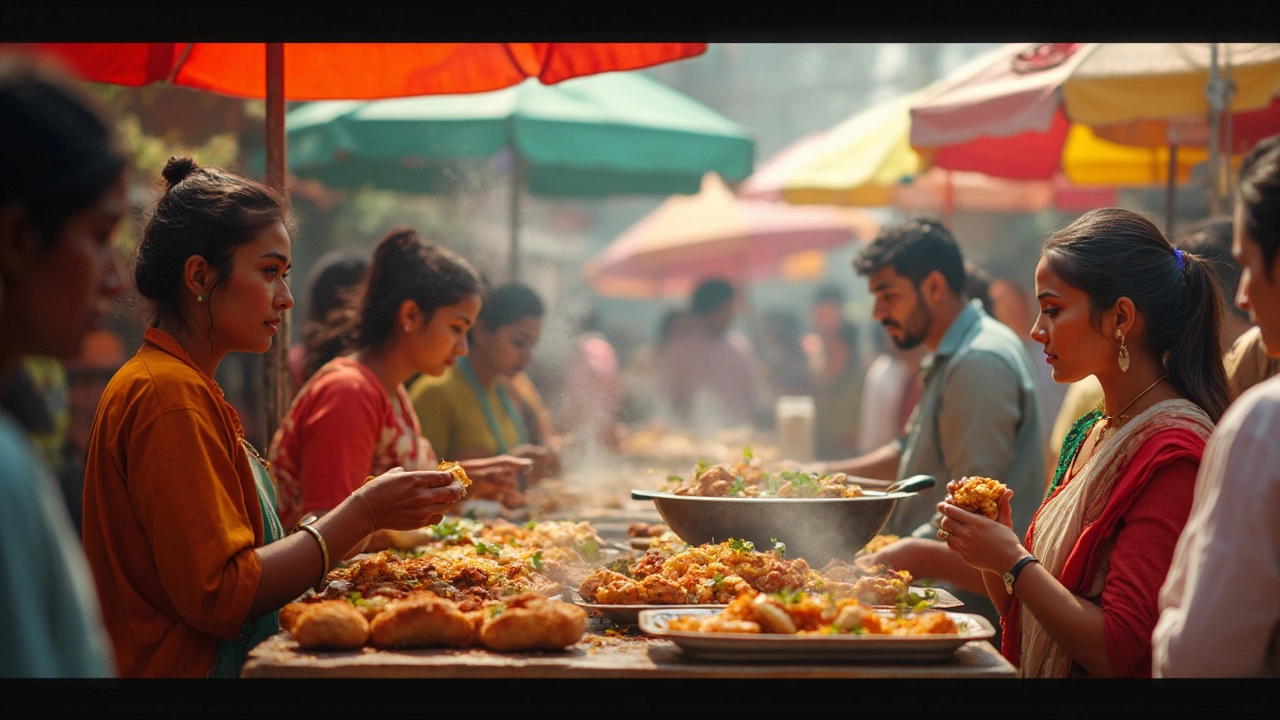Unhealthy Indian Food
When talking about unhealthy Indian food, dishes that are high in saturated fats, refined carbs, or added sugars and often linked to health concerns. Also known as indulgent Indian cuisine, it frequently shows up in celebrations and street stalls. For example, Biryani, a rice‑based dish layered with oil, ghee, and sometimes fatty meat often pushes calorie counts high. Similarly, Sugar, refined sweeteners used in desserts and drinks spikes blood sugar quickly. These ingredients illustrate why unhealthy Indian food is a hot topic among nutritionists and home cooks alike.
What Makes Indian Dishes Unhealthy?
Unhealthy Indian food encompasses high‑fat preparations, it requires mindful ingredient swaps, and it influences long‑term health outcomes. The most common culprits are deep‑fried snacks, creamy gravies, and sweet syrups. Articles like “Is Biryani Junk Food?” break down the calorie load of classic biryani, showing how ghee and fried onions can double the fat content. Meanwhile, studies highlighted in “Which Ethnic Group Consumes the Most Sugar?” reveal that sugary drinks and laddus contribute a sizable share of daily sugar intake for many Indian households. Even seemingly light dals can turn heavy if cooked with excessive oil, as explained in “Dal Nutrition Facts: Is It More Protein or Carbs?”. Understanding these patterns helps you see the direct line from ingredient choice to health impact.
Another key entity is Chutney, a condiment often made with sugar, oil, and sometimes coconut milk. While chutney adds zing, its sugar and oil levels can sneak up on you, especially in restaurant servings. The “Homemade Chutney Shelf Life” guide hints at how preservation methods (like adding extra sugar) can unintentionally raise the calorie count. Recognizing that sauces and side dishes are part of the unhealthy equation is essential; they are not just afterthoughts but active contributors to the overall nutrient profile.
Knowing the problem is half the battle, the next step is swapping. Replace ghee with a splash of heart‑healthy oil, use brown rice instead of polished basmati in biryani, and sweeten chutneys with dates or jaggery sparingly. “Secret Ingredients That Make Biryana More Tasty” actually lists spices that boost flavor without extra fat, proving that taste and health can coexist. Likewise, “Paneer vs Tofu: Which Tastes Better?” shows tofu as a lower‑fat alternative to paneer, cutting down saturated fat while keeping protein high. These practical tips illustrate how you can keep the soul of Indian cuisine alive while trimming the unhealthy bits.
Finally, context matters. Street vendors often serve deep‑fried samosas and pakoras fresh out of hot oil, making them irresistible but calorie‑dense. Home cooks, on the other hand, have the freedom to control oil temperature, portion size, and seasoning. The post “Why Add Lemon to Biryani?” explains how acidity can balance richness, letting you use less fat without losing depth. By applying the same logic across dishes—whether it’s adding lemon, using yogurt instead of cream, or opting for grilled over fried—you create a healthier eating pattern without abandoning the flavors you love. Below you’ll find a curated collection of articles that dive deeper into each of these topics, from nutrition breakdowns to cooking hacks, so you can start making smarter choices today.

Most Unhealthy Food in India: What You Need to Know
Discover the most unhealthy food in India and what makes it so bad for your health. Learn about popular favorites that could be ruining your diet, plus the hidden facts behind common ingredients. Find practical tips to make smarter choices even when you crave tasty treats. Get ideas for easy swaps so you can enjoy classic flavors without risking your well-being. Dive into the real risks, backed by recent trends and research.